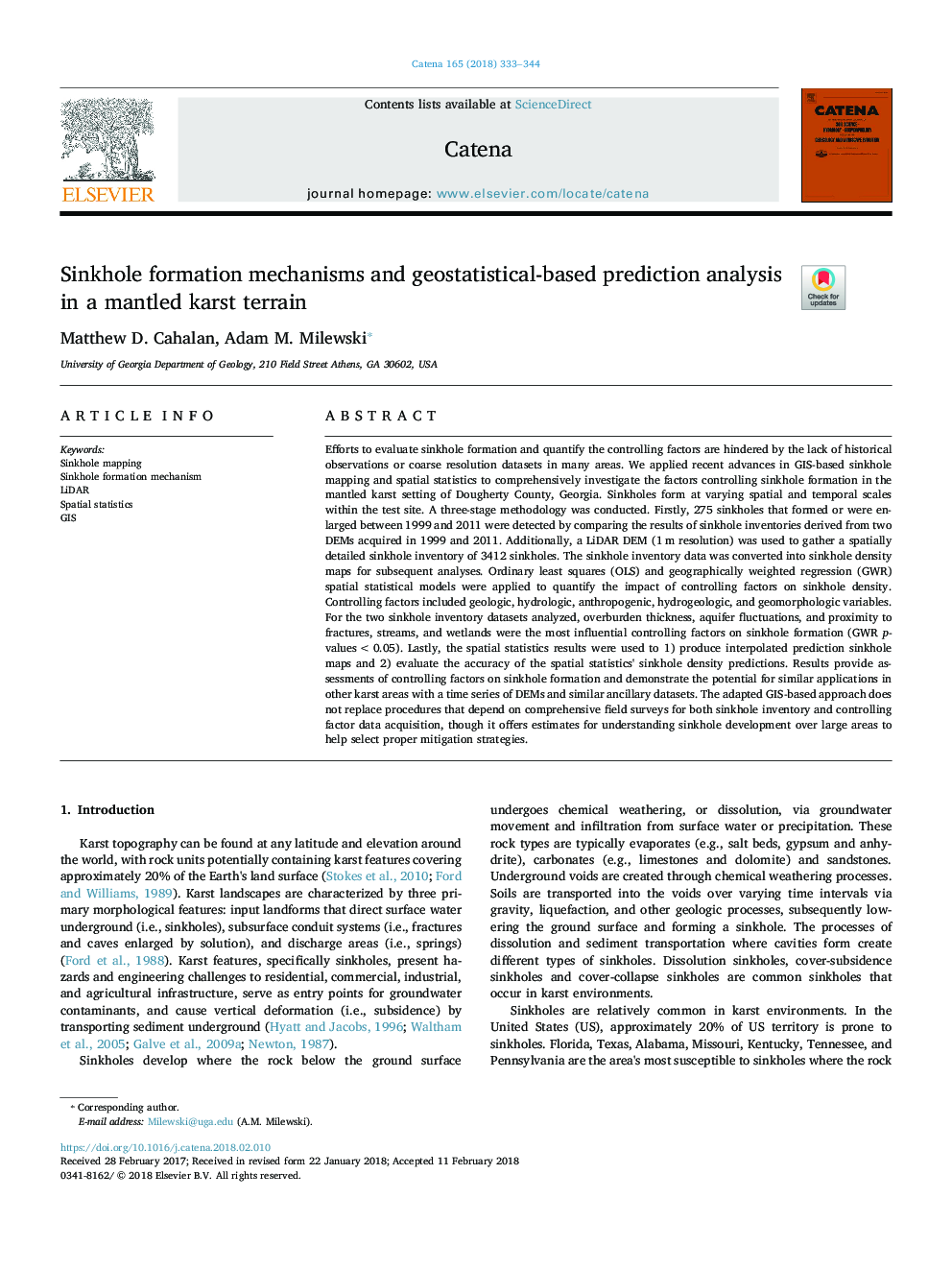| Article ID | Journal | Published Year | Pages | File Type |
|---|---|---|---|---|
| 8893605 | CATENA | 2018 | 12 Pages |
Abstract
Efforts to evaluate sinkhole formation and quantify the controlling factors are hindered by the lack of historical observations or coarse resolution datasets in many areas. We applied recent advances in GIS-based sinkhole mapping and spatial statistics to comprehensively investigate the factors controlling sinkhole formation in the mantled karst setting of Dougherty County, Georgia. Sinkholes form at varying spatial and temporal scales within the test site. A three-stage methodology was conducted. Firstly, 275 sinkholes that formed or were enlarged between 1999 and 2011 were detected by comparing the results of sinkhole inventories derived from two DEMs acquired in 1999 and 2011. Additionally, a LiDAR DEM (1â¯m resolution) was used to gather a spatially detailed sinkhole inventory of 3412 sinkholes. The sinkhole inventory data was converted into sinkhole density maps for subsequent analyses. Ordinary least squares (OLS) and geographically weighted regression (GWR) spatial statistical models were applied to quantify the impact of controlling factors on sinkhole density. Controlling factors included geologic, hydrologic, anthropogenic, hydrogeologic, and geomorphologic variables. For the two sinkhole inventory datasets analyzed, overburden thickness, aquifer fluctuations, and proximity to fractures, streams, and wetlands were the most influential controlling factors on sinkhole formation (GWR p-values <0.05). Lastly, the spatial statistics results were used to 1) produce interpolated prediction sinkhole maps and 2) evaluate the accuracy of the spatial statistics' sinkhole density predictions. Results provide assessments of controlling factors on sinkhole formation and demonstrate the potential for similar applications in other karst areas with a time series of DEMs and similar ancillary datasets. The adapted GIS-based approach does not replace procedures that depend on comprehensive field surveys for both sinkhole inventory and controlling factor data acquisition, though it offers estimates for understanding sinkhole development over large areas to help select proper mitigation strategies.
Keywords
Related Topics
Physical Sciences and Engineering
Earth and Planetary Sciences
Earth-Surface Processes
Authors
Matthew D. Cahalan, Adam M. Milewski,
